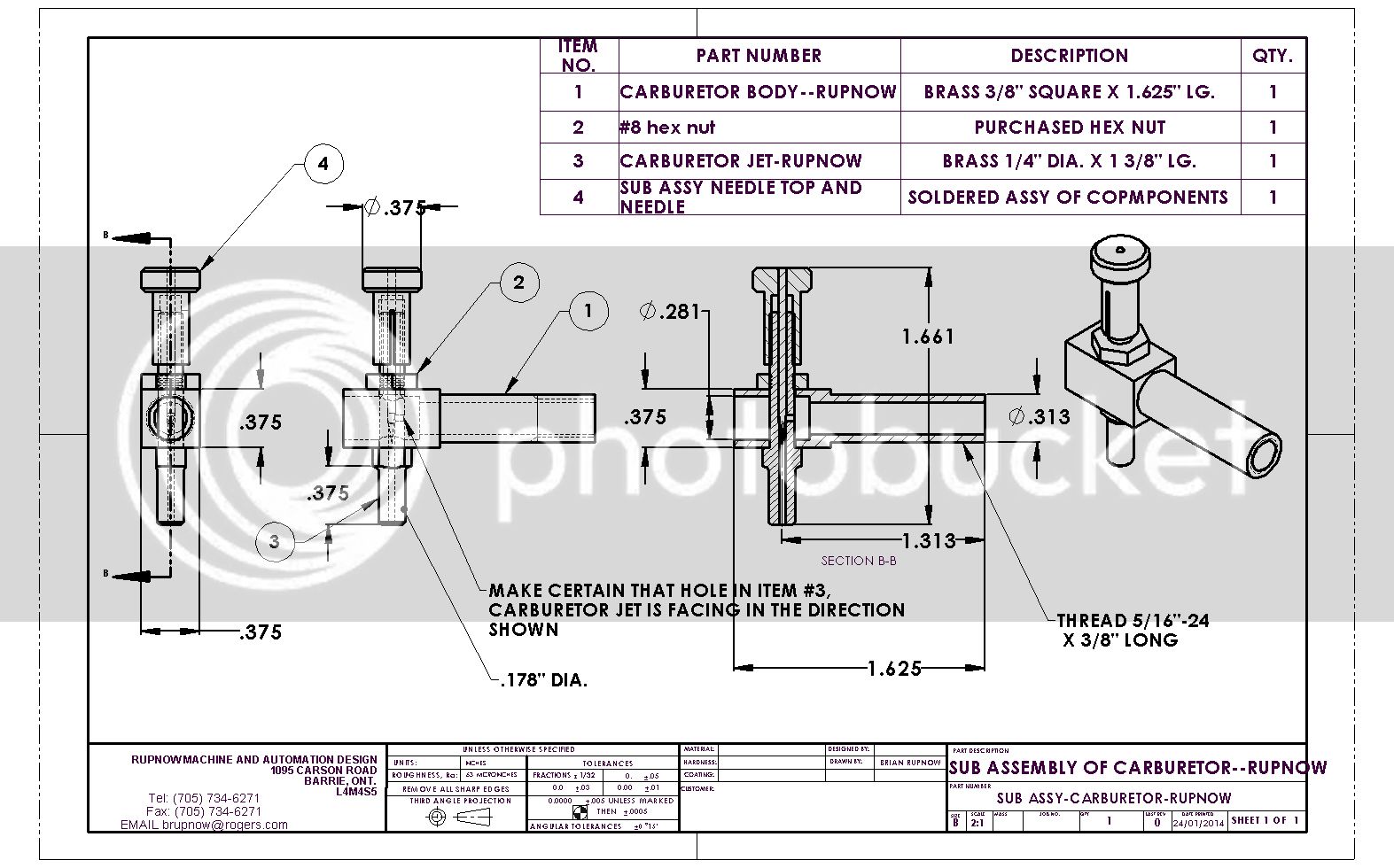Philjoe5
Well-Known Member
- Joined
- Jul 12, 2007
- Messages
- 1,727
- Reaction score
- 321
Here's where I'm at with this engine. Using the starter designed by Brian, which works great BTW, the engine seems to fire at times and then doesn't fire at all when I squirt fuel into the intake manifold.
I connected up my version of a Jan Ridder's vapor carb . I've tried the air bleed adjustment lean and rich but no go, usually not even a pop. I know I'm sucking air through it because through evaporation the tank gets very cold. I checked the spark and it's yellow and fires consistently. I've tried 20 degrees to 5 degrees before TDC for the spark. Exhaust valve lift starts around 10 degrees before BDC. I've varied that up to 0 degrees before BDC.
The intake valve sucks open and closed when I spin the engine. Thinking maybe I didn't have a good cylinder head seal, I remade the gasket for that this evening and will give it a try tomorrow.
Did I overlook anything?
Cheers,
Phil
I connected up my version of a Jan Ridder's vapor carb . I've tried the air bleed adjustment lean and rich but no go, usually not even a pop. I know I'm sucking air through it because through evaporation the tank gets very cold. I checked the spark and it's yellow and fires consistently. I've tried 20 degrees to 5 degrees before TDC for the spark. Exhaust valve lift starts around 10 degrees before BDC. I've varied that up to 0 degrees before BDC.
The intake valve sucks open and closed when I spin the engine. Thinking maybe I didn't have a good cylinder head seal, I remade the gasket for that this evening and will give it a try tomorrow.
Did I overlook anything?
Cheers,
Phil





